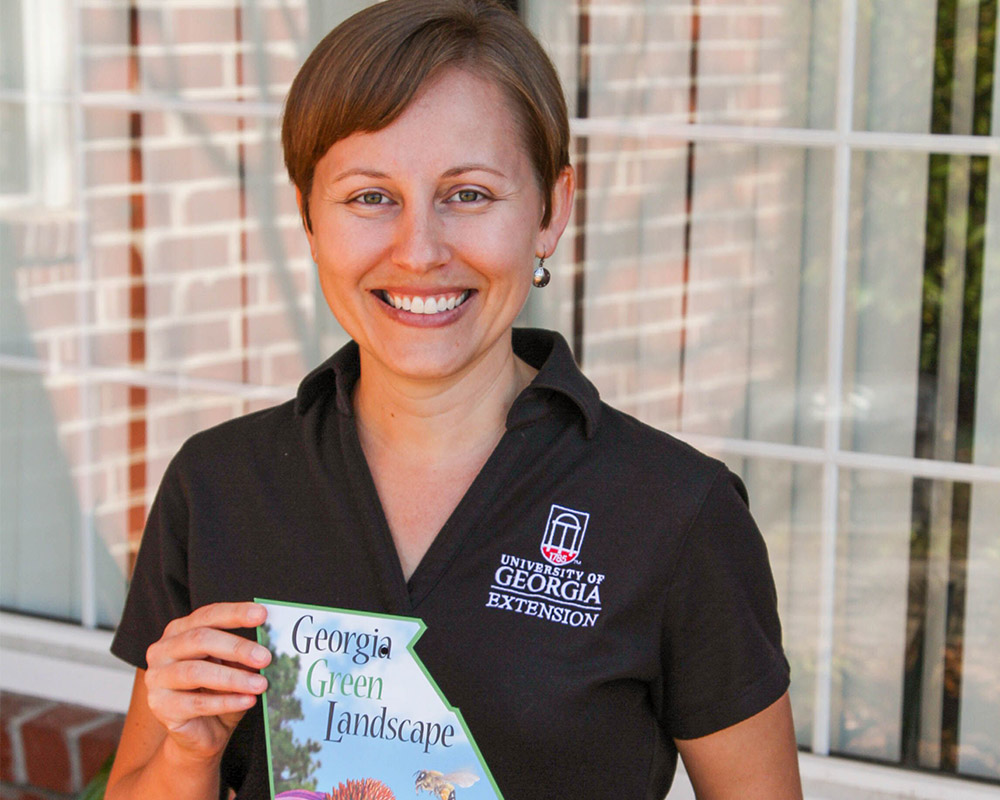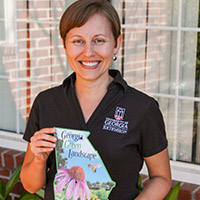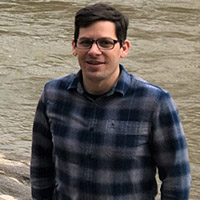For some residents, a pristinely manicured lawn free of weeds and undisturbed by insects is the ultimate goal. However, a new program from University of Georgia Cooperative Extension encourages creating a more natural landscape that reduces chemical use and incorporates native plants to promote biodiversity and protect the environment.
Launching to the public on March 15, the Georgia Green Landscape Steward certification program provides educational resources to teach Georgians about protecting natural resources, increasing plant and animal biodiversity, conserving soil and water, providing wildlife and pollinator habitat, and improving public and environmental health.
The program was developed by Camden County Agriculture and Natural Resources agent Jessica Warren and Martin Wunderly, area water agent for UGA Extension’s Northeast District. Both agents had heard of similar programs in neighboring states and saw a statewide need for the program in Georgia.
After successfully applying for a mini-grant from the UGA Center for Urban Agriculture, the duo developed the program using research-based materials from UGA faculty and from peer institutions in neighboring states.
The program website hosts educational videos and other self-guided resources for property owners that will guide them on how to implement sustainable green practices in their landscapes, including composting and mulching, creating pollinator- and wildlife-friendly spaces, water conservation and quality, stormwater, controlling invasive species, incorporating native plants and promoting biodiversity.
“The goal is to improve landscape practices to make them more sustainable and to reduce nonpoint source (NPS) pollution and water waste while encouraging habitats for wildlife and pollinators,” said Warren. “NPS pollution is the main type of water pollution we have and it is becoming harder and harder to control,” said Warren, adding that NPS includes anything from pesticide and insecticide runoff from lawns and oil from roadways to household chemicals and pet waste.
Wunderly — who developed the materials on water conservation, water quality and stormwater — wants residents to know that what they do can make a difference.
“It is not just larger or regional landscapes that have an impact. It is a combination of everybody’s lawn being washed off by rainwater and everything being washed into the local stream. You can’t point at one corner of a neighborhood or a city or a region, pollution is coming from everywhere,” he said.
That is why the team made the program easily scalable from large commercial properties to small residential plots.
“It is all about being mindful of what is on your property and seeing what you can potentially change in your behaviors and practices that will reduce nonpoint source contamination from your property,” Wunderly said. “I like the aspect that this an education program, but at the same time it is getting people to make a difference in their surroundings on their own piece of land. As a whole it adds up. There is this huge force of people who could potentially really help to reduce pollution, improve landscapes and air quality and increase wildlife habitat through these actions.”
Warren said the program is modifiable for all regions of the state, and Extension agents throughout the state have access to resources to help property owners with the steps to complete the certification.
Because people have been spending more time at home due to the COVID-19 crisis, Warren said she has seen an increase in the requests from homeowners on actions they can take to become more sustainable and environmentally friendly, including supporting wildlife and pollinators that have been negatively impacted by human development.
“This program gives people something to empower them and to provide simple strategies they can incorporate — for little to no money — and make a positive impact,” Warren said. “Each person can make their property a more natural habitat, then we will see how that creates corridors through the landscape with islands of habitat so that migrating animals and insects can have resources along the way. If enough people create sustainable landscapes, we will begin to see how much habitat that collective effort creates and the impact it will have.”
Once participants have reviewed the program materials, they can document the practices they have implemented on their property through the Green Landscape Metrics Scorecard, which provides a checklist for each of the 10 topic areas covered by the program. Each task on the list is worth a certain number of points.
Once they have completed the checklist and earned a minimum of 70 points, businesses and residents can submit the form to request Georgia Green Landscape certification. Certification comes with an electronic or mailed paper certificate. Those who successfully receive certification can purchase a weather-resistant Georgia Green Landscape Steward yard sign to acknowledge their accomplishment and spread awareness in their communities.
“People who care about their property also care about what people think about their property. As awareness about pollinators and birds and wildlife gets more popular, this signage really helps get people interested and it also becomes a status symbol,” Warren said. “If we can get social pressure in neighborhoods and areas to make changes that will impact our environment and waterways, people will see the implications of their actions more directly. It makes it harder to ignore.”
Full information on the program is available at site.extension.uga.edu/georgiagreen. For assistance with the program in your area, contact your local UGA Extension office by visiting extension.uga.edu/county-offices.










